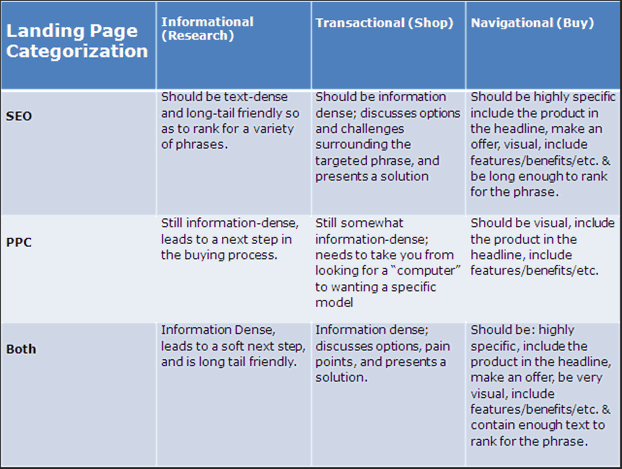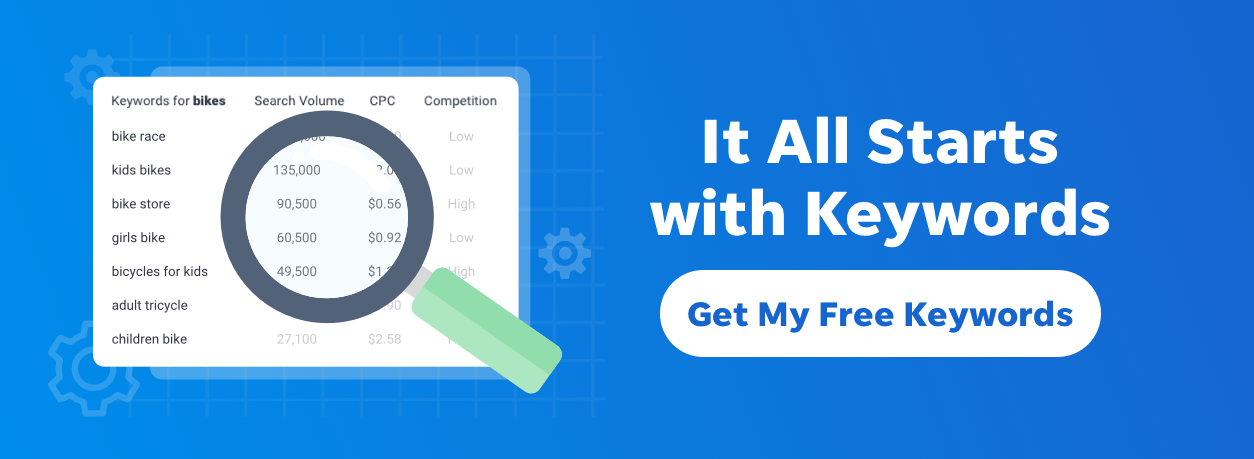
How to Create PPC Landing Pages that Work for SEO
How to Create PPC Landing Pages that Work for SEO
April 3, 2015
The conventional thinking on pay-per click landing pages is that they should be “dedicated landing pages”, should be “de-indexed”, and that you need to create individual pages for PPC versus organic search. There are a number of very good resources on landing pages that will tell you this.
There’s validity here; it’s most likely the case that you’ll optimize conversions by creating a separate landing page for PPC traffic.
However, this post will tell you why in some cases it can be a poor use of resources.
We’ll talk about why this is, and about when it makes sense to allow SEO and PPC to share landing pages.
The Roots of Conventional Landing Page Wisdom
So how did conventional wisdom become so conventional? The argument for creating dedicated landing pages for paid search is actually pretty compelling. With a landing page whose sole purpose is to convert PPC traffic, you can:
- Limit Choices – By taking away elements like standard navigation and external links, you ensure that you aren’t sending your prospect away before they complete the desired action.
- Make Pages More Visual & Less Text-Dense – These are clicks that you’ve paid for: by and large you want to lead them, if not to a purchase, to the next stage in the buying process.
- Focus on a Customized Offer and Simplify the Conversion Process – Unlike “organic SEO” visitors, you know the exact ads triggering a visit and can create a highly specific offer and provide visitors a simplified conversion process.
There’s really very little doubt that creating dedicated, optimized landing pages for PPC traffic has obvious advantages.
Every Landing Page Represents an Additional Content Piece
The problem here is that every PPC landing page requires a certain amount of time and focus. If you divide PPC pages & SEO pages, you’re also dividing your efforts.
If you create two pages for each group of keywords you’re targeting (one for SEO & one for PPC) you’re cutting the number of keyword-focused landing pages you can create in half.
When You might Consider Using the Same Content for SEO & PPC
The good news is: there are actually a series of common objectives that the two types of content share, and there are a number of instances where you can create the same piece of content for SEO & PPC, and consider the single piece “optimized” for both.
Let’s take a look at the different types of queries we may be targeting with either SEO or PPC (also know as the three “stages of the buying cycle”):
- Informational (or “Research”) – At this stage searchers are “early” in the buying the cycle, looking for information. An example of a query for this stage might be: “Computers”.
- Transactional (or “Shop”) – This searcher profile is looking to complete an action, but still doesn’t know exactly what she is looking for. An example of a query for this stage might be: “Buy a Computer”.
- Navigational (or “Buy”) – This searcher knows exactly what he is looking for. He might use a query like: “Dell Latitude E5400”.
Now, let’s look at what each page hopes to accomplish and how it should be structured; our SEO-focused pages, our PPC-focused pages, and a page created for both:
Why Using Content for SEO & PPC Would Make Sense for You
In an ideal world, you’d have an Ad Group for every keyword. Every Ad Group would come equip with five ads, and you’d test extensively. Then you’d go and create dedicated landing pages for PPC and SEO-facing content.
But it’s not an ideal world. You don’t have unlimited resources. Good copywriters are hard to find, and you very well may be in a position where you need to choose between having parallel types of content and having twice as many keyword-focused content pieces.
The premise here is not that creating a unique landing page for PPC is useless: it’s simply that more often than not, you would actually be better off creating one landing page that specifically speaks to a given page in the buying cycle. If you push the resources you have towards creating new landing pages that target a greater variety of keywords, and you ensure that all of the pages you create are geared towards conversions, you should have no fear of inter-linking those pages and you should have no fear of sending both SEO and PPC traffic to any of these optimized pages.
Did you like this blog post? Then read on as we show you how to create the best landing page for a Google AdWords account.
Meet The Author
Tom Demers
Tom Demers is Co-Founder & Managing Partner at Measured SEM and Cornerstone Content.
See other posts by Tom Demers
More Articles Like This
Comments
Please read our Comment Policy before commenting.






